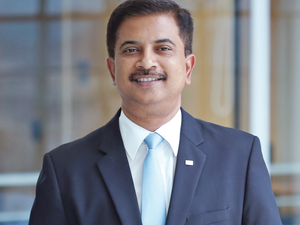
We launch a fund only if we are confident of managing it well. The three recent launches cater to our core strengths. We see healthcare broadening into a diversified theme in the coming years. Introducing a focused fund also provides a differentiated strategy to the existing diversified strategy we run in all our equity funds.
Post categorisation of funds, the mid-cap category has gone through an overhaul. This is the only category bracketed on both sides. Overall, there are 150 stocks around which the portfolio is to be built. Mid-cap funds after categorisation look very different from the pre-categorisation era. The definition for mid-cap stocks is now common to all fund managers. Earlier, the way one fund house used to run a mid-cap strategy was very different from that of the other. But now is the beginning of a new era in the mid-cap space. We intend to address this space in a new way. We now have three new fund managers who we believe will be able to execute the mandates effectively. Our product basket in equity is complete now.
What is the thinking behind the recent changes in positioning of existing funds?
Mirae Asset Emerging Bluechip Fund was primarily a large & mid-cap fund with its heavy large-cap allocation. The fund had 33% in large-caps the day before the categorisation came into effect. We approached categorisation from a portfolio perspective. The mistake we probably made was not categorising our large-cap fund (erstwhile Mirae Asset India Opportunities, now Mirae Asset India Large Cap) as such on day one, when we were already 80% in largecaps as mandated. We corrected this later. We view large-cap and multi-cap categories as similar in nature.
A lot is said about the ability of multi-cap funds to change allocation, but the category average allocation to large-caps is 75%. It remains broadly in that range and doesn’t dip below 70%. So the multi-cap category is essentially large-cap in nature and there is not much to differentiate between a portfolio having 80% large-caps and a standard multi-cap fund. We feel the differentiated category going forward will be the large and mid-cap.
Some of your funds are gaining in size, how do you plan to overcome this constraint?
We are happy to see that funds where size is not an issue are growing. At `15,000 crore, the large-cap fund is still small from the category perspective. The size issue comes to light more in the mid-cap and small-cap space. Even within mid-cap segment, size is not the biggest issue. It is the velocity of flows or the pace of AUM growth which is a bigger concern.
In October 2016, we addressed this when we closed down Emerging Bluechip for lump sum purchase. The fund was then adding 10% to the AUM monthon-month. This is not healthy in a space that lacks liquidity. By taking money only through the SIP route, we addressed that issue. Now even though the fund has amassed a large size, it is growing at a pace we are comfortable with. The damage that heavy flows can do to fund performance goes unnoticed. We have learnt the virtue of that in the last three years. We are wary of what size and flow can do to fund management. We were the first fund to exit the mid-cap space in 2016. We will not hesitate on taking a similar decision in the future in the midcap fund if the need be.
How do you address credit quality concerns when managing debt funds?
We believe that credit risk is permanent, while market risk is temporary. That is the philosophy with which we address the debt fund category. We are wary of credits. What helps us is that we have a two-pronged credit assessment framework. We have a fairly robust credit team in India which gets reassessed by our credit team sitting in South Korea. In the small time span that we have managed this space, we largely remained isolated from most of the troubled credits. Credit assessment is the responsibility of the fund manager that cannot be outsourced to any external credit rating agency.
How do you view the active versus passive debate?
As asset managers, we are indifferent to that debate. Our belief is that active and passive are different businesses with their own intricacies. With active, one is addressing a broad clientele of retail investors while passive investing is catering to a niche clientele with a demat account. The passive investor is already into equity investing. We will have some clients overlapping, but as it stands now these are two different businesses. Globally, there is a fair amount of active thinking that goes into passive products. We will see an inflection point in India when more creativity is introduced in these products, moving away from the basic benchmark driven products currently available.
What advice do you have for investors?
My observation is that an investor behaves differently for different asset classes. The conviction that Indian investors have for real estate and gold is not the same for equities yet. If you imbibe the same investing principles towards other asset classes within equities too, the results will be much better. Most of the investors have bought those asset classes to be held over for long periods. Both property and gold are bought and held over generations despite price fluctuations. Yet, people don’t panic and flee these assets. That is the approach required in equities. It is now gradually becoming visible with the emerging SIP culture.
(Your legal guide on estate planning, inheritance, will and more.)
Download The Economic Times News App to get Daily Market Updates & Live Business News.
(Your legal guide on estate planning, inheritance, will and more.)
Download The Economic Times News App to get Daily Market Updates & Live Business News.









 Get Unlimited Access to The Economic Times
Get Unlimited Access to The Economic Times
